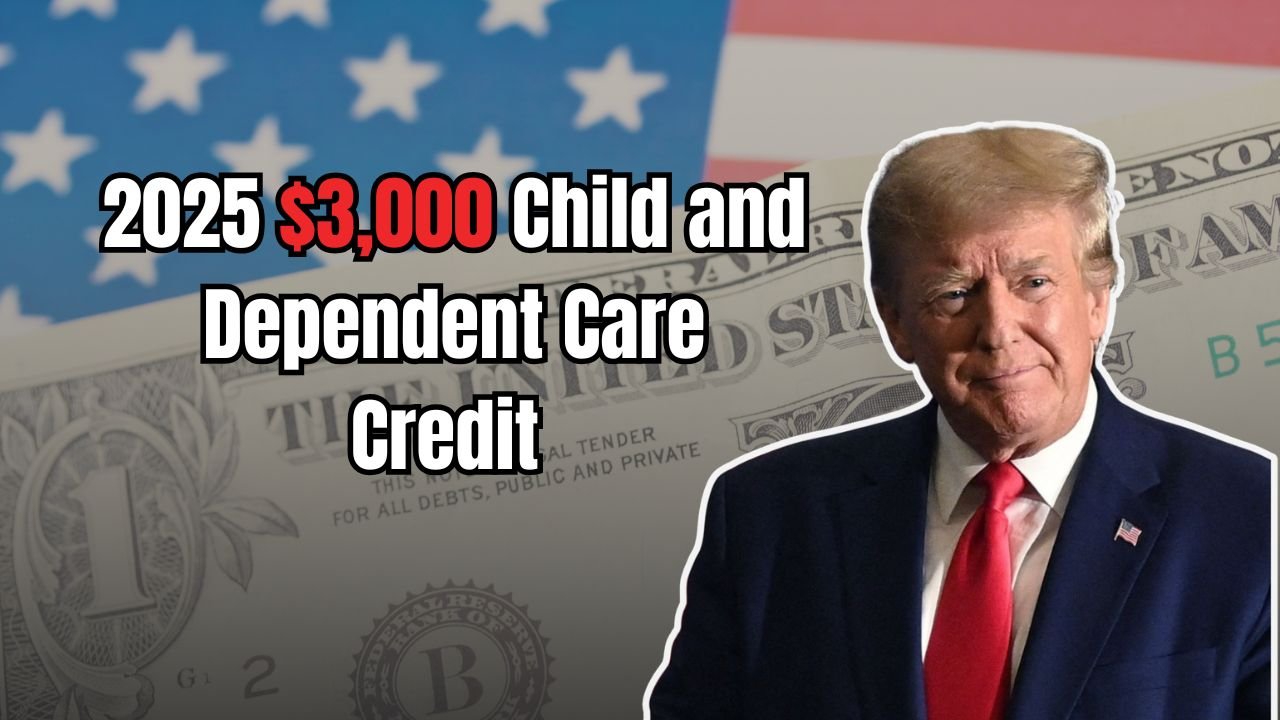The Child and Dependent Care Credit is a non-refundable tax credit offered by the Internal Revenue Service (IRS) to families who pay for the care of children or dependents in order to work or look for work. This credit directly reduces your tax liability, helping working parents and caregivers manage the costs of essential care services.
Unlike refundable credits, this one does not generate a refund if your tax owed is less than the credit amount — but it can still significantly reduce what you owe to the IRS.
Key Features
- Up to $3,000 credit for one qualifying person
- Up to $6,000 credit for two or more qualifying persons
- Non-refundable: It reduces your tax due but does not provide an additional refund
These limits remain consistent with IRS guidelines for the 2024 tax year (filed in 2025).
Why This Credit Matters
The purpose of the Child and Dependent Care Credit is to help families balance employment and caregiving responsibilities. It provides crucial financial relief for:
- Parents returning to work after maternity or paternity leave
- Single parents paying for childcare while working full-time
- Families caring for dependents with special needs
By covering part of the care cost, this credit allows parents or guardians to stay in the workforce while ensuring proper care for their dependents.
Who Can Claim the Credit?
To be eligible, taxpayers must meet several requirements based on care needs, income, and filing details.
Qualifying Person
A qualifying person includes:
- A child under age 13
- A spouse or dependent who is physically or mentally unable to care for themselves and who lived with you for more than half of the year
Other Eligibility Rules
- You (and your spouse, if filing jointly) must have earned income from work or be actively seeking employment.
- The care expenses must enable you to work or look for work — volunteer activities do not qualify.
- If your employer provides dependent-care benefits, those amounts must be subtracted from your eligible care expenses.
What Counts as Eligible Care Services
Qualifying Care Expenses
Expenses can be claimed for care provided inside or outside your home, as long as the main purpose is the safety and well-being of the qualifying person.
Eligible expenses include:
- Daycare centers or nurseries
- Babysitters or nannies
- In-home attendants or caregivers for disabled dependents
- After-school programs (not including education)
Non-Eligible Expenses
The following costs cannot be claimed:
- Educational tuition (for kindergarten and above)
- Payments made to a spouse, the parent of a qualifying child, or a dependent you claim on your return
- Costs unrelated to care, such as overnight camps or activity fees
Employer Benefits and Their Impact
If your employer offers dependent-care benefits (for example, under a cafeteria plan), those amounts must be deducted from your total qualifying expenses.
For instance, if your childcare expenses are $6,000 and your employer paid $2,000 in dependent-care benefits, you may claim only $4,000 of the remaining expenses when calculating your credit.
Who Can Provide the Care
- The caregiver may be an individual or organization, such as a licensed daycare provider or home caregiver.
- The provider cannot be your dependent or your child under age 19.
- You must include the provider’s name, address, and Taxpayer Identification Number (TIN) on your return to claim the credit.
How to File for the Credit
When filing your U.S. federal tax return, follow these steps:
- File Form 1040 or 1040-SR for your regular return.
- Complete Form 2441 (Child and Dependent Care Expenses).
- This form requires you to report your care provider’s details and the total amount paid for eligible care.
- Attach Form 2441 to your federal return when submitting.
Is the Credit Refundable?
No. The Child and Dependent Care Credit is non-refundable. This means it can reduce your tax owed to zero, but it cannot generate a refund beyond that.
Example:
If you owe $2,000 in taxes and qualify for a $3,000 credit, your tax liability becomes zero, but you will not receive the extra $1,000 as a refund.
When Is This Credit Most Helpful?
This credit can provide meaningful relief in situations such as:
- Families with young children who require daycare while parents work
- Households with dependents needing in-home care to allow caregivers to stay employed
- Workers with high childcare costs that make returning to work financially challenging
Conclusion
The Child and Dependent Care Credit 2025 provides valuable support to working parents and caregivers by helping offset the cost of care for children and dependents. With credits of up to $3,000 for one dependent or $6,000 for two or more, this program helps families stay financially stable while maintaining employment.
To take full advantage, make sure you:
- Meet the eligibility rules,
- Keep records of your care expenses and provider details, and
- File Form 2441 accurately with your tax return.
The credit may not provide a refund, but it can still significantly reduce your overall tax burden while supporting the care your family needs.
FAQs
Q1: Who qualifies as a “qualifying person” for this credit?
A qualifying person is a child under age 13, or a spouse/dependent who is physically or mentally unable to care for themselves and lives with you for more than half the year.
Q2: Can I claim the credit if I received dependent-care benefits from my employer?
Yes, but any employer-provided dependent-care benefits must be deducted from your total qualifying expenses before you calculate the credit.
Q3: What happens if the credit exceeds my tax liability?
Because it’s non-refundable, the credit will only reduce your tax bill to zero. Any remaining amount will not be refunded.
